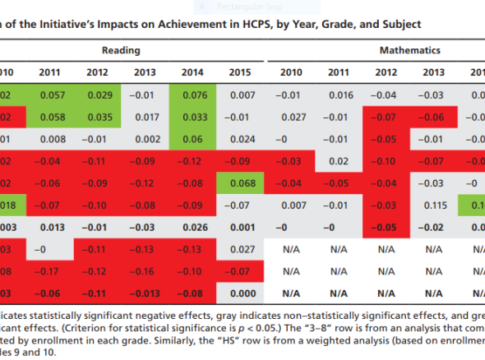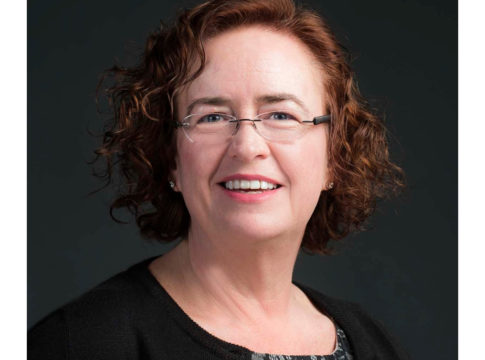If you caught your pediatrician Googling “upset stomach remedies” before deciding how to treat your child and home-brewing medications over an office sink, you might start looking for a new pediatrician. So how would you feel if you learned that Google and Pinterest are where your child’s teacher goes to look for instructional materials?
Well, brace yourself, because that’s exactly what’s happening. And no, your child’s teacher is not an exception. A new study from the RAND Corporation finds that nearly every teacher in America—99 percent of elementary teachers, 96 percent of secondary school teachers—draws upon “materials I developed and/or selected myself” in teaching English language arts. And where do they find materials? The most common answer among elementary school teachers is Google (94 percent), followed by Pinterest (87 percent). The numbers are virtually the same for math.
But don’t blame teachers. These data, for reasons both good and bad, reveal a dirty little secret about American education. In many districts and schools—maybe even most—the efficacy of the instructional materials put in front of children is an afterthought. For teachers, it makes an already hard job nearly impossible to do well.
Expecting teachers to be expert pedagogues and instructional designers is one of the ways in which we push the job far beyond the abilities of mere mortals. Add the expectation that teachers should differentiate every lesson to meet the needs of each individual student, and the job falls well outside the capacity of nearly all of America’s 3.7 million classroom teachers (myself included).
If you’re looking for the root causes of America’s educational mediocrity, start with how poorly we prepare teachers for one of the most important parts of the job. “Few teachers ever take coursework on instructional design and, therefore, have little knowledge of the role it plays in student learning,” notes Marcy Stein, an education professor with expertise in evaluating instructional design at the University of Washington Tacoma. It’s like expecting the waiter at your favorite restaurant to serve your meal attentively while simultaneously cooking for twenty-five other people—and doing all the shopping and prepping the night before. You’d be exhausted too.
“Even if teachers were taught about instructional design, they would likely not have the time to prepare instructional materials, field test those materials to determine if they are effective, and modify the materials before using them to teach students. An iterative process is crucial for the development of effective materials,” Stein points out.
There is good evidence to suggest that we are making a serious mistake by not paying more attention to curriculum, classroom materials, and instructional design. A 2012 Brookings study by Russ Whitehurst and Matt Chingos demonstrated that the “effect size” of choosing a better second-grade math curriculum was larger than replacing a fiftieth-percentile teacher with a seventy-fifth-percentile teacher. This is a powerful result, especially considering that it’s relatively easy to give all children a better curriculum but extremely difficult to dramatically increase the effectiveness of their teachers. It’s cost-neutral too: A Center for American Progress report by Ulrich Boser and Chingos showed virtually no difference in price between effective and ineffective curricula.
To be clear, there are perfectly good reasons why even the best teachers would be hitting the Internet for lesson planning—to find supplemental materials for individual students, for example, or adaptations for special needs kids. And teachers report using books and materials from myriad sources, including those selected by their schools and districts. But the RAND study offers a window into a phenomenon that is rarely discussed in American education: What children learn in school varies wildly from state to state, within districts, and even within grades in the same school.
If we’re serious about raising the output of our K–12 system at large—not by a little, but a lot—here are some of the questions we should be asking: What exactly is the teacher’s job, and what is the best use of her limited time? Is it deciding what to teach, or how to teach it? Is the soul of the work instructional design or instructional delivery? Do you want your child’s teacher to have the time to analyze student work and develop a keen eye for diagnosing mistakes and misunderstandings? Do you want her to give your child rich and meaningful feedback on assignments and homework? How about developing warm and productive relationships with your child and your family?
Now ask how you expect her to do all those things at a high level while spending precious hours every week creating curricula from scratch. Nearly half of teachers in the RAND study reported spending more than four hours per week developing or selecting their own instructional materials. Newer teachers almost certainly spend the most, hampering their ability to develop their craft.
To be sure, there are master teachers to whom we should eagerly grant nearly complete classroom autonomy, including over curriculum. You wouldn’t tell Prince, “Just work on your guitar playing. Someone else will write the songs.” But it’s simply unrealistic to assume that every teacher is a Prince-level virtuoso and polymath—let alone to base the job description on that assumption. No one would accuse Yo-Yo Ma of being a second-rate talent because he merely plays notes written by Bach.
Without question, we want our best teachers to play a significant role in instructional design so that more children and teachers can benefit from their expertise. But it is equally certain that twelve-plus years of a well-designed and sequenced curriculum would lead to better outcomes for children than the occasional year with a great yet isolated teacher. It would also let teachers focus more time on the art of teaching—that is, more time with student work and less time on Pinterest on Sunday night with an empty plan book at their elbow.
Great teachers need great instructional materials. It’s time we got serious about providing them.
– Robert Pondiscio
This post appeared on Flypaper after appearing in a slightly different form at U.S. News.






